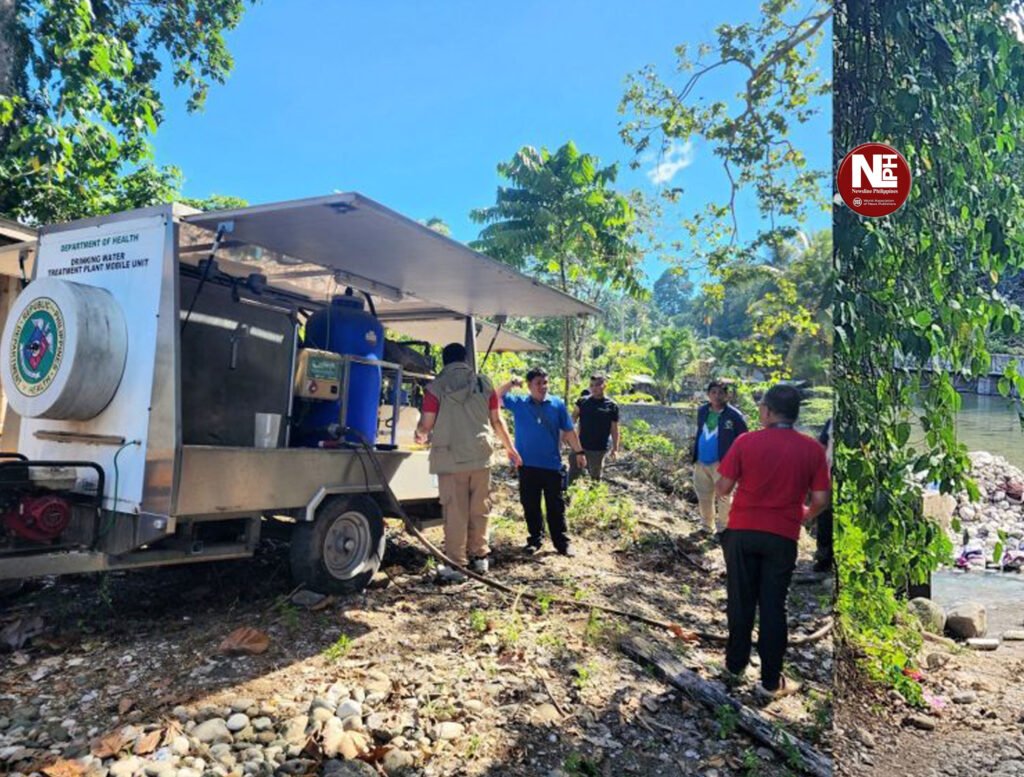
MANAY, Davao Oriental (October 21) — Clean, safe drinking water is now flowing into evacuation centers here after the Department of Health – Davao Center for Health Development deployed a mobile water treatment plant to support communities hit hard by the recent earthquakes.
The mobile facility, dispatched by Department of Health – Davao Center for Health Development on Tuesday, forms part of the agency’s emergency Water, Sanitation and Hygiene (WASH) response. It is currently stationed at a tent city in Barangay Central and will serve families staying in nearby evacuation centers.
“Access to clean and safe water is crucial after disasters to prevent outbreaks of water-borne diseases,” said Engr. Mohammad Fahrudin Aliuden, program manager of DOH Davao’s Environmental and Occupational Health Unit.
“We are working closely with the LGU to maximize the use of this mobile facility and strategically position it where it’s most needed.”
The unit is equipped with a 3KVA gasoline generator and can operate beside natural water sources such as rivers. It processes raw water through a multimedia filtration system — including layers of gravel, sand, and carbon — to remove sediments, impurities, and turbidity. Chlorine is added to disinfect the water, ensuring protection against bacteria, viruses, and parasites that cause diseases like cholera and typhoid fever. Ferric chloride is also used as a coagulant to help clear out remaining contaminants.
To guarantee safety, the facility is equipped with water testers to check potability in real time, following the Department of Health (Philippines)’s Philippine National Standards for Drinking Water (AO 2017-0010).
In addition to the water treatment system, DOH also distributed aqua tabs, jerry cans, and hygiene kits to affected residents to strengthen community resilience against disease. Personnel from the local government were trained to operate the machine to sustain water supply during the emergency period.
Local officials said the mobile water plant will help ease pressure on limited water sources in evacuation sites and ensure communities can access safe drinking water as recovery operations continue.

